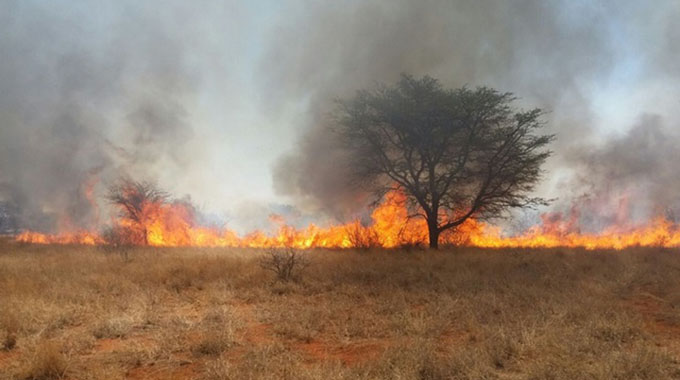
Jeffrey Gogo
Climate Story
Someone posted a picture of little hairy creatures on a social media group where we are both mutual acquaintances.
Photographed on May 8, two pinkish Marsh owlets barely a few days old, with large, booming dark eyes, nestled peacefully in the dry grasses of Monavale vlei in western Harare.The next day, Monavale burned. A second picture showed huge flames of fire tearing through the vast marshlands. The two owl chicks’ young lives sealed by a cruel twist of fate — a wild fire started by some reckless individual hiding behind one excuse or the other.
“Judging by their age from the (May) 8th, another week or so they probably could’ve made it to flight. They definitely would’ve been able to run to safety,” decried the mutual acquaintance, Julie Pierini, on the National Fire Steering Committee Whatsapp group.
Heartbreaking, but fire can be a force for good or bad, destroying even the seasonally spongy vlei of Monavale. Yet fire is also a vital part of “rejuvenation in wetland environments,” the occasional burn allowing “certain plants to regenerate.”
The owlets, undone by their innocence in wingless bodies, weren’t so lucky, a fate suffered by many creatures like frogs that breed in the marshlands.
“The biodiversity in wetland or woodland ecosystems is a vital part if its functioning. If we want to continue to benefit from the services of these ecosystems, we need to learn to protect the biodiversity too,” Pierini cautioned.
Veld fires are a yearly menace in Zimbabwe, driving major changes in land use patterns, altering the forest cover, plant and animal composition.
In 2019, more than 1,2 million hectares of land was destroyed by veld fires, down 51 percent from a year earlier. Four people died and financial loss exceeded ZW$5.2 million.
According to environment regulator EMA, the figures have soared from just 400 000ha at the end of 2001, when Government speeded up land reforms, to resettle over 300 000 native farmers on virgin land. Farmers have gone on to cut down trees, clearing land for agriculture. Fire is commonly used in this process also.
Environment Minister Mangaliso Ndlovu has ambitious plans of cutting the size of the area of land burnt by a “minimum 25 percent” this year, he announced while launching the National Fire Week two weeks ago.
The fire week is an attempt to raise awareness against veld fires prior to the so-called “fire season”, which occurs every year between August and October, the period in which anyone is allowed to start a fire outside their homes legally.
But a lack of sufficient preparations and skill to prevent small fires from becoming big fires that decimate native woodlands and grasslands has become a major concern.
“It is critical to remind society that uncontrolled veld fires invariably come with loss of biodiversity on the affected land, including, but not limited to, vegetation, wildlife, livestock, property, human life, and the functionality of ecosystem services is usually impaired in the process,” said Mr Ndlovu.
Lack of effective fire preventive strategies is now a key part of the problem threatening Zimbabwe’s climate goals under the Paris Agreement, if left unchecked.
A Government plan drawn up under the climate accord aims to sequestrate unquantified amounts of carbon dioxide through its forests, estimated to be covering 15,6 million hectares, or 45 percent of Zimbabwe’s total land area.
The plan revolves around Zimbabwe getting paid for keeping its trees standing — not destroyed by fire — under a UN forestry programme called REDD+.
The plan is already underway in the country’s west, under the Hwange-Sanyati Biological Corridor Project, funded by the World Bank to the tune of US$29 million.
Fire should not be excluded from the ecosystem but planned for in a responsible manner for the achievement of ecosystem health as an objective,” said an analyst on the National Fire Steering Committee social media group, emphasising that certain trade offs will have to be given away.
Minister Ndlovu farmers throughout Zimbabwe to “construct standard fire guards that are 9 by 9 metres wide in and around all farms and homesteads.
This will have significant impact in reducing the spread of veldt fire in the event of an outbreak.”
God is faithful.
